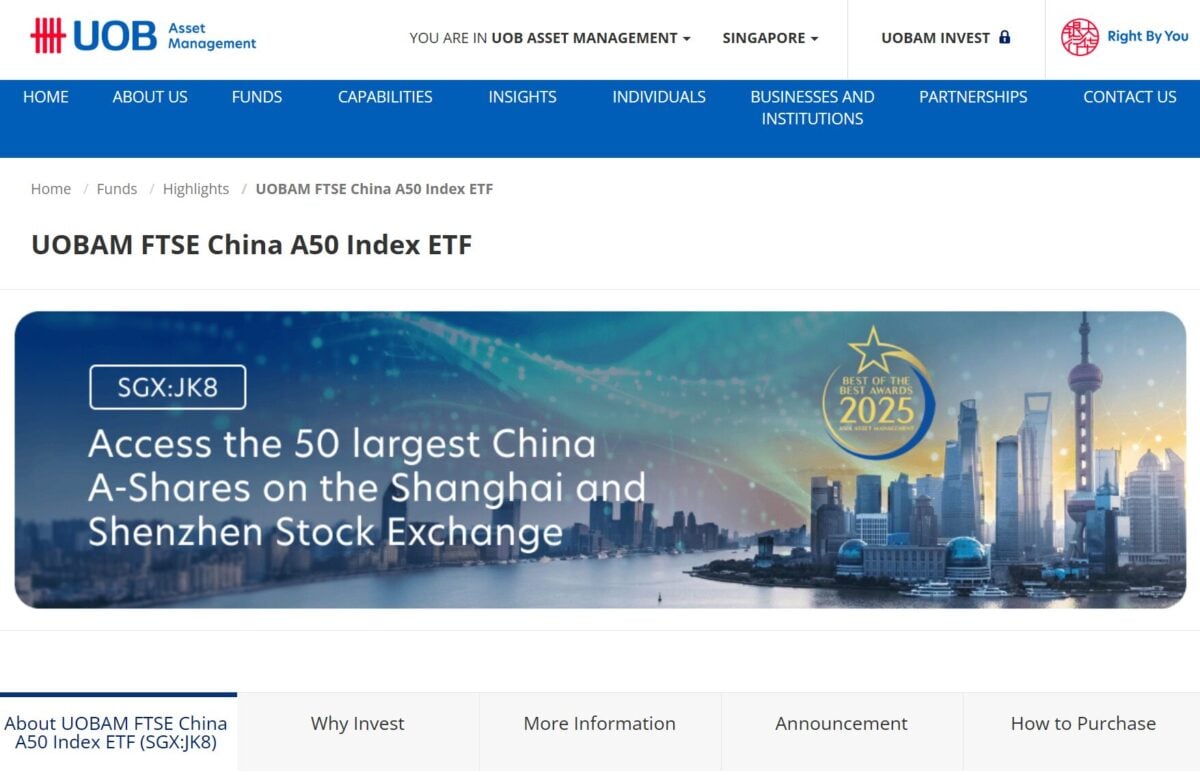
HDB is home to nearly 80% of Singapore’s resident population. Over the years, the role of public housing has evolved from putting a roof over our heads to an aspirational home that can cost over $1.7 million at the highest-end.
Reflecting the wealthier middle-class, economic maturity, and housing aspirations of Singaporeans, HDB transited from the Registration for Flats System (RFS) to the Build-To-Order (BTO) scheme.
How The Old RFS (Registration for Flats System) Worked
Under the old RFS system, prospective homebuyers would register their interest in a geographical zone. Meanwhile, HDB would build HDB flats at various locations.
Later, when new flats in that zone were available, HDB would invite registered applicants to choose from whatever units remained.
While this system made sense in Singapore’s early years, when the priority was simply to provide shelter for the population and keep them out of the streets, it came with some drawbacks as the country developed.
Some defining features and issues of the RFS included:
– Timing uncertainty: Completion dates were unpredictable, and applicants did not know when they would be invited to book a flat. For those invited earlier than expected, they may not be ready to move in or have enough for the downpayment. For those invited later, they continued to wait with no certainty over their housing situation.
– Uncertainty in location: As mentioned, buyers applied for a flat in housing zones, rather than specific projects (like how we do under the current BTO model). They could be offered flats in locations they didn’t really like even though it was within their housing zone. For example, they could have applied for a flat in Ang Mo Kio, but be invited to select a unit in Hougang. This is because HDB’s zoning for the location was for Ang Mo Kio/Hougang.
– Uncertainty in price and downpayment: Prices were not fixed upfront, and buyers only found out the exact cost and downpayment when they were invited to select a unit. Sometimes they were not financially prepared if the unit was priced higher than expected. In the 80s and 90s, prices of units were also rocketing up with each new housing estate offered. Someone who was invited to select a flat a few months after another person may have had to pay tens of thousands of dollars more – which was very big money in those days.
– Switching and queue effects: Applicants with better queue numbers could also switch zones, which may disrupt allocations in other areas. This may not have been their fault entirely, as they may not have liked their location, be prepared to move in or have the money for the downpayment.
– Speculative registrations: Of course, some people would have also registered pre-emptively to secure queue spots, even before they were ready to buy.
– Oversupply risk: Because HDB was building independently of actual demand, the 1997 Asian Financial Crisis (AFC) left them with tens of thousands of unsold flats. HDB was criticised for overestimating demand and wasting public resources. This also led to the sales of unconventional flats, such as the Jumbo units.
The end result was that while RFS helped thousands of families secure homes, it offered little clarity. Buyers often didn’t know when they’d get a flat, where it would be, or how much they’d have to pay.
Changing aspirations of Singaporeans also meant that it was an increasingly outdated model. People were no longer rushing just to have a shelter over their heads. They were instead aspiring for more choices and a better lifestyle.
The Shift To BTO Model In 2001
In response to new economic realities and changing consumer expectations, the BTO model was piloted in April 2001. In the first launch, 2,500 flats were offered across four sites in Sengkang and Sembawang.
In many ways, the BTO model was the correct model for newer generations of Singaporeans looking for a home.
#1 A More Discerning Generation Of Homebuyers
By the 2000s, Singaporeans’ living standards had risen significantly. Earlier generations may have seen housing as a basic necessity and were content with any flat that could “keep the weather out” or help them leave the streets.
But, by the new millennium, buyers were increasingly seeking homes that matched their preferences in location, quality, and design.
They wanted choice, not just a roof. Families were willing to wait longer or pay slightly more for homes near transport nodes, better amenities, or familiar neighbourhoods.
The RFS’ vague zoning system and limited flexibility just could not meet this new mindset. The BTO system, in contrast, allowed prospective homebuyers to apply for specific projects, giving them full certainty over the location, unit type, price range, and completion timeline.
In short, housing demand had shifted from quantity to quality.
#2 Reducing Oversupply Risk
After the Asian Financial Crisis (AFC) in 1997, demand for new flats fell sharply, but RFS projects already in progress continued to add to inventory. The BTO model flipped this by building only after demand was confirmed. This was typically when 70% of units were booked in the earlier years, preventing waste and allowing HDB to respond to real-time market signals.
In subsequent years, this fell to 50%. And, recently, HDB have also started building unannounced BTO projects ahead of even getting an indication of demand.
#3 Providing Greater Certainty And Transparency
The BTO model gave applicants more clarity from the start. They knew the exact site, floorplan, expected completion date, and total cost before committing. This made financial planning easier and eliminated the uncertainty of early downpayment calls under RFS.
#4 Aligning Supply And Demand
Under RFS, forecasting errors could leave HDB with too many flats (post-AFC in the early 2000s) or too few flats (when demand was hot).
The BTO model made supply more responsive and driven by actual demand.
#5 Supporting Evolving Expectations Of Fairness And Choice
As society modernised, the perception of fairness shifted from “first come, first served” to “transparent and predictable.”
BTO, with its clear balloting process and upfront project information, aligned with this new social compact.
RFS vs BTO: The Key Differences
| Features | RFS (Registration for Flats System) | BTO (Build-To-Order) |
| Application scope | Broad zone or town | Specific project and location |
| Timing | Indefinite; no fixed timeline | Known timeline from launch to completion |
| Price & downpayment clarity | Unknown at registration | Fully disclosed at balloting |
| When construction begins | Built in advance of demand | Starts only after sufficient bookings (e.g. 70%) |
| Oversupply risk | High during downturns | Reduced; supply tied to real demand |
| Switching between areas | Allowed; disrupted allocations | Not allowed; commitment to one project |
| Wait time | Sometimes shorter but unpredictable | Usually longer but more certain |
| Buyer certainty | Low (location, timing, cost unclear) | High (known price, site, and timeline) |
The BTO Model Also Had Its Challenges
While the BTO model resolved many issues with the old RFS model, it also introduced new ones. Over the years, the system has evolved in response to changing market conditions and public feedback.
#1 Minimum Take-Up Threshold And Cancellations
Early BTO projects were launched only when about 70% of units were booked. This reduced oversupply but also meant several projects were delayed or cancelled when demand fell short in the earlier years.
HDB has since become more flexible, aiming for a 50% take-up rate. Flats that were not selected were re-offered in other launches, including the Sales of Balance Flats (SBF) and under the Open Booking of Flat.
More recently, HDB has also starting work on unannounced BTO projects, like to to avoid bottlenecks and to offer Shorter Waiting Time (SWT) projects as demand has remained high.
Read Also: What Are HDB’s Shorter Waiting Time (SWT) Flats – And Should You Apply For Them
#2 Potentially Longer Waiting Times
Because construction is only meant to begin after demand is confirmed, buyers typically have to wait three to five years for completion. To address this, HDB introduced shorter waiting time flats, as well as begun conducting preparatory works even before official launches.
In a recent move, HDB has started construction on flats not yet announced for sale, signalling a new hybrid approach that combines the demand-driven discipline of BTO with the foresight of pre-emptive building.
For instance, works have begun on projects at the Berlayar estate (the former Keppel Club site) and Tampines Street 22 even before they were offered to buyers. In Berlayar, a 1,039-unit development is underway, and in Tampines, another 284-unit project has begun, both slated for completion by 2028.
This pre-emptive work helps shorten waiting times for future buyers and ensures smoother project delivery. Essentially, this blends the best of both worlds: the certainty of BTO with the speed of anticipatory planning.
HDB Flats Have Evolved From Basic Shelter To Aspirational Homes
The shift from RFS to BTO mirrors Singapore’s broader social transformation. We’ve transformed from a nation focused on survival to one defined by choice, planning, and aspiration.
In the early days of nation-building, HDB’s mission was straightforward. To provide affordable shelter. But as incomes rose and lifestyles improved, Singaporeans began to look beyond utility. They sought homes that reflected their preferences. Many wanted the choice of staying near parents, MRT lines, or schools, and were willing to wait or pay more for the right fit.
The BTO model recognised this evolution. It offered more predictability and choice.
The post How The Built-To-Order (BTO) Differs From The Old Registration for Flats System (RFS) appeared first on DollarsAndSense.sg.











